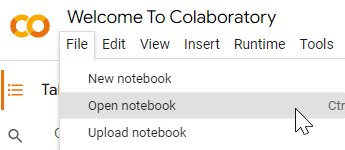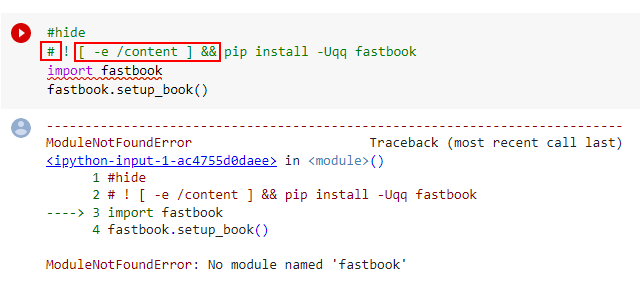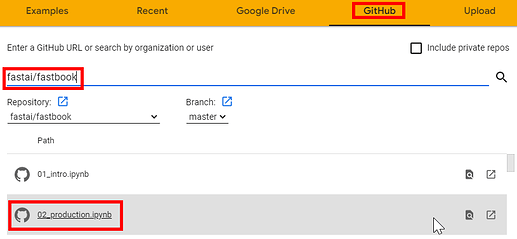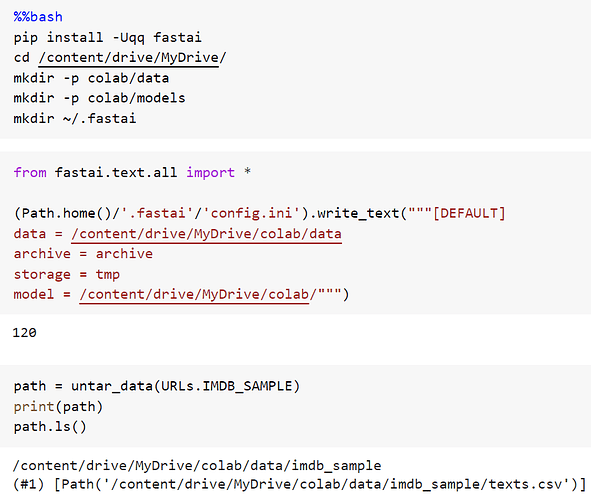FYI, I’ve added this to the top of the notebook now so people will know about this issue in the future:
I got the same error. I re-ran the cell and it ran fine. I think this can be ignored.
Thanks!
If anyone is having trouble running pip install fastai in a Kaggle kernel, getting errors complaining about Temporary failure in name resolution (or a connectivity error), make sure your Internet is switched to on under Settings in the right-hand menu:

If you don’t see the option for turning on Internet under Settings, it’s because the new account requires phone verification.
Hope that helps someone 
it is pre-installed in kaggle…
Someone sent me a question about how to deal with this error when running a notebook in Kaggle:
The answer is - don’t worry about it. It’s just a bunch of spurious warnings which you can ignore. You’ll find that the latest version of fastai has gotten installed successfully, despite pip’s big red “ERROR”!
Hey guys, I was trying last week to run a notebook through Kaggle, but it seems as if I need to verify my account with a phone number (but it didn’t work for me, tried contacting Kaggle but haven’t heard back yet). Does this sound familiar to anyone?
Yeah this is a new thing they added, everyone needs to be verified on Kaggle to use some features like Internet connection in Kaggle Notebooks.
Yes, Javi. This is normal if you want internet connectivity and GPU usage.
Thanks Tanishq and Nick, I’ll press Kaggle to see why it might not be working for me
What’s the process of being verified on Kaggle? I can’t tell if I am or not
I think if you go to https://kaggle.com/[USERNAME]/account there should be an option for verification.
You can see on your Account page in Kaggle (find by clicking on your top-right profile image) under Phone Verification.
You can also just check if you can turn on internet in a Kaggle notebook:
![]()
I strongly recommend using colab for the book, not kaggle. It’s all set up and ready to go on the course website. The chapters are too big to even save correctly on kaggle!
Thanks Sarada, I do remember this from the 2020 course now that you mention it, I am considering something with full-body pose estimation so I should probably look for some well-annotated datasets and see what I can find that could be similarly trained using fastai.
I am hoping to look at some estimates of joint angles, such as knees and legs/back for sports analysis.
So my post was worth it to learn this at least. Its not mentioned in fastbook/README.md at master · fastai/fastbook · GitHub
Confirming figures show out-of-the-box with Colab, per following example opening Chapter 2…
-
After signing in… File > Open notebook

-
Select Github tab, search fastai/fastbook, select chapter 2…
-
In case of domestic blindness (as I, missing that the
pip installline was commented out)
running the first cell produces the following error. Easily fixed by deleting the red boxed characters.

So this worked…

5 different datasets are available here.
Sorry I should have been more specific.
The best way to open the book in colab is to go to course.fast.ai, click Notebook Servers on the left, click Colab, then click on the chapter you want to read.
Everything should “just work”.
Customising the Default Root and Project Folders for Google Colab
So I think I’ve figured out how to specify your Google Drive folder as the location for your root directory before loading data and creating models with fastai. I’m very happy to share my notebook describing how I am doing this here.
Hopefully you find this helpful @sambit @bencoman @mike.moloch.
Please let me know if you have any problems accessing the notebook or getting it to work for you.



